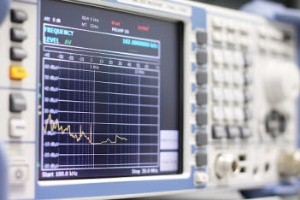Electronic test equipment market ‘to propel US$4.19bn of global growth opportunities’ by 2024, finds Frost & Sullivan

With Industrial Internet of Things (IIoT) or Industry 4.0 transforming manufacturing and operations ecosystems across the aerospace & defense (A&D) industry,electronic test equipment (ETE) vendors have begun to evolve their technologies to keep pace.
A&D companies are ready to support the latest technological developments with substantial investments in R&D as new technology adoption vendors are responding to the surge in opportunities for asset management, condition monitoring, and data analytics services with expansions in the frequencies, bandwidth availability, and functionalities of their existing systems.
“ETE vendors are not only rolling out next-generation measurement and instrumentation equipment but are also adopting novel business models,” said Sambaran Das, senior research analyst, measurement & instrumentation. “Software-as-a-Service (SaaS)-based models, in particular, are likely to gain traction as A&D customers across applications automate their processes. It can prove to be a highly significant value addition delivered by hardware vendors selling software.”
Frost & Sullivan’s recent analysis, global electronic test equipment market in aerospace & defense, forecast to 2024, provides a detailed analysis of the current and evolving opportunities in the A&D industry for the electronic test, measurement, and instrumentation market.
This assessment includes forecasts, an overview of the competitive structure, competitors’ market share, market trends, and product analysis. It also identifies market drivers and restraints, key growth opportunities, challenges, and possible threats.
The A&D industry has seen renewed growth due to increasing defense spending and budget allocations by national governments all over the world.
“While the North American and European markets continue to lead the ETE market due to their historically dominant position in the A&D industry and enthusiasm to adopt new technologies, Asia-Pacific is emerging as a popular investment hub,” noted Das.
“The presence of leading ETE manufacturers in high-growth countries such as China, India, and South Korea has already taken this region ahead of the market leaders in terms of growth rate. The greater defense spending in China and India and the record rise in commercial air traffic have further boosted the adoption rates of ETE in the region.”
Globally, the $3.25 billion (€2.81 billion) ETE market is expected to touch $4.19 billion (€3.62 billion) by 2024, once vendors make the most of the market expansion opportunities inherent in:
- Portable/handheld testers: With the advent of IIoT, portable testers need to offer benchtop-level accuracy and compatibility with wireless network connections. The advancements in chip technologies will enable vendors to deliver testers with superior RF performance, longer battery life, and greater ruggedness.
- 5G and millimeter-wave (mmWave): 5G evolution will present vendors with opportunities to develop devices with faster communication and better network connectivity. Also, the demand for mmWave frequencies and higher modulation bandwidths will encourage them to provide cost-effective testing of bandwidth-rich mmWave frequencies.
- Hardware-in-loop (HIL) testing: With HIL simulation testing, engineers can cost-effectively test aircraft components such as electronic control units (ECUs) and line-replaceable units (LRUs). As A&D HIL systems have different needs than traditional automotive HILs, they need to be more reliable, highly scalable, and tightly synchronised with a large number of sensors and actuators.
- NewSpace: Rapid developments in space and satellite industry with the emergence of more than 30 companies in the past five years will drive the demand for testing solutions.
- Radar: Radar will continue to dominate the market due to the rising need to support an array of antennae with multichannel synchronisation and coherent operations.
“Adaptability to evolving technologies, ability to address greater bandwidths, and providing software-defined instrumentation are the most important requirements for T&M in the A&D industry,” said Das.
“With the growing complexity of end-user systems and testing needs, upgradable and flexible platforms are the focus of leading companies for enhancing the longevity of test equipment and reducing the cost of test. Mega Trends such as Industry 4.0 or IIoT and evolving business models will change the market dynamics and test solution offerings by leading T&M vendors.”
Global Electronic Test Equipment Market in Aerospace & Defense, Forecast to 2024 is part of Frost & Sullivan’s Test & Measurement Growth Partnership Service program.
For further information on this analysis, click here
Comment on this article below or via Twitter @IoTGN
